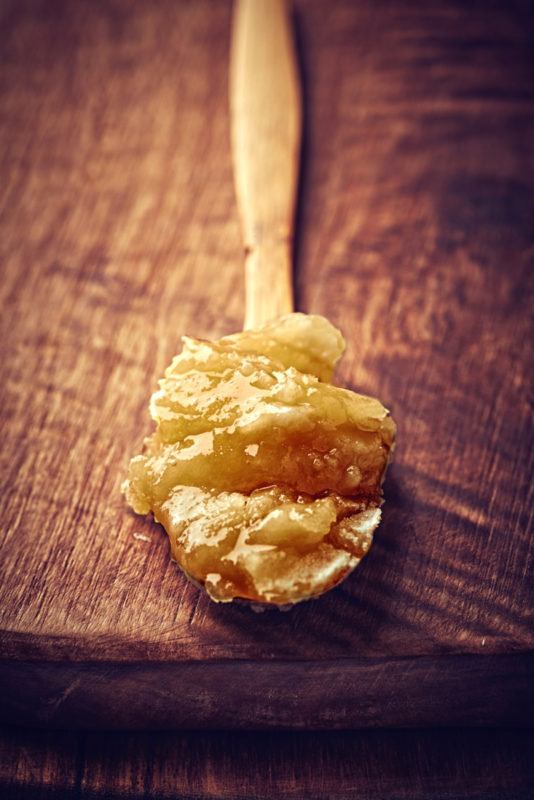Health
Hi Honey
I love that my youngest son is old enough for honey!
He goes to preschool 3 days out of the week and he can not have anything involving peanuts so NO PBJs 🙁
I have to get creative so I love making almond butter, honey, banana sandwiches;)
Quick Tip:
Q: When can my baby start eating eat honey?
A: Unlike many of the other food restrictions during infancy, allergies and choking are not the issue here. Pediatricians recommend waiting until your baby is at least 12 months before introducing honey because it may contain spores of bacteria that can cause botulism. This doesn’t mean our honey supply is contaminated — these bacteria are harmless to adults and children over 1. But it can make babies, whose digestive and immune systems are less developed, seriously (and possibly fatally) sick. For this reason, it’s best to avoid all honey for the first year — even jars that claim to have been pasteurized, since this process still can’t reliably remove all the bacteria.
Copyright 2009 Meredith Corporation.
The benefits of honey are not only amazing internally but also fantastic for facial masks and scrubs! So after I make my son his morning oatmeal with peanut butter and honey I occasionally make-up a facial honey mask for myself!
Quick Tip:
@Dabur.com
What are the Benefits of Honey for Skin and Face?
Moisturises the skin deeply
Acts as a Pore Cleanser
Gentle Exfoliator
Lightens Scars
Useful in Sunburn
Fights Acne & Pimples
Reverses Age
Adds a Natural Glow
Hydrates the Skin
Helps Reduces Wrinkles
Brightens Skin Complexion
© Copyright 2017 Dabur India Ltd. All rights reserved.
Quick Tip:
10 Surprising Health Benefits of Honey
Written by Kris Gunnars, BSc on September 5, 2018
Since ancient times, honey has been used as both a food and a medicine.
It’s very high in beneficial plant compounds and offers several health benefits. Honey is particularly healthy when used instead of refined sugar, which is 100% empty calories.
Here are the top 10 health benefits of honey.
1. Honey Contains Some Nutrients
2. High-Quality Honey Is Rich in Antioxidants
3. Honey Is “Less Bad” Than Sugar for Diabetics
4. The Antioxidants in It Can Help Lower Blood Pressure
5. Honey Also Helps Improve Cholesterol
6. Honey Can Lower Triglycerides
7. The Antioxidants in It Are Linked to Other Beneficial Effects on Heart Health
8. Honey Promotes Burn and Wound Healing
9. Honey Can Help Suppress Coughs in Children
10. It’s Delicious, But Still High in Calories and Sugar
There are two different types of honey when shopping, raw honey Vs regular honey. In a lot of the raw honey selections, there is honeycomb left in the bottle always a good sign of raw honey. The benefits in raw honey surpass those of regular pasteurized honey.
Quick Tip:
All About Raw Honey: How Is It Different Than Regular Honey?
Written by Ryan Raman, MS, RD on January 20, 2018
Honey is a thick, sweet syrup made by honey bees.
It’s loaded with healthy plant compounds and has been linked to several health benefits.
However, there’s controversy surrounding which type of honey — raw or regular — is healthiest.
Some people believe that the raw variety of honey is better for optimal health, while others claim there is no difference between the two.
What Are the Main Differences Between Raw and Regular Honey?
Raw and regular honey are processed quite differently.
This can lead to a variety of distinctions between the two, especially in quality.
Here are the main differences between raw and regular honey.
Raw Honey Is More Nutritious
Raw honey contains a wide variety of nutrients.
It has approximately 22 amino acids, 31 different minerals and a wide range of vitamins and enzymes. However, the nutrients are only present in trace amounts (5Trusted Source, 6Trusted Source, 7).
What’s most impressive about raw honey is that it contains nearly 30 types of bioactive plant compounds. These are called polyphenols, and they act as antioxidants (3, 8Trusted Source, 9).
Many studies have linked these antioxidants with impressive health benefits, including reduced inflammation and a lower risk of heart disease and certain cancers (6Trusted Source, 10Trusted Source, 11Trusted Source).
Conversely, commercial honeys may contain fewer antioxidants due to processing methods.
For example, one study compared the antioxidants in raw and processed honey from a local market. They found that the raw honey contained up to 4.3 times more antioxidants than the processed variety (3).
Interestingly, one unofficial study by the US-based National Honey Board found that minimally processed honey contains levels of antioxidants and minerals that are similar to those of raw honey.
However, there are very few studies comparing the two types. More research in this area can help shed light on the impact of processing on the antioxidants in honey.
Most Regular Honey Doesn’t Contain Any Pollen
Bees travel from flower to flower collecting nectar and pollen.
The nectar and pollen are taken back to the beehive, where they are packed into the honeycomb and eventually become a food source for the bees (12Trusted Source).
Bee pollen is surprisingly nutritious and contains over 250 substances, including vitamins, amino acids, essential fatty acids, micronutrients and antioxidants (13Trusted Source).
In fact, the German Federal Ministry of Health recognizes bee pollen as a medicine (14).
Bee pollen has been linked to many impressive health benefits. Studies have found that it may help fight inflammation and improve liver function. It also has properties that may help fight against heart disease and stroke (15Trusted Source).
Unfortunately, processing methods like heat treatment and ultrafiltration can remove bee pollen (2).
For example, one unofficial study analyzed 60 samples of commercial honey brands in the US and discovered that over 75% of all samples contained no pollen.
I started using raw honey when my sister would come to visit me for the summers and informed me of all the goodness of it, especially for facials!!!!!
Thanks for reading!


